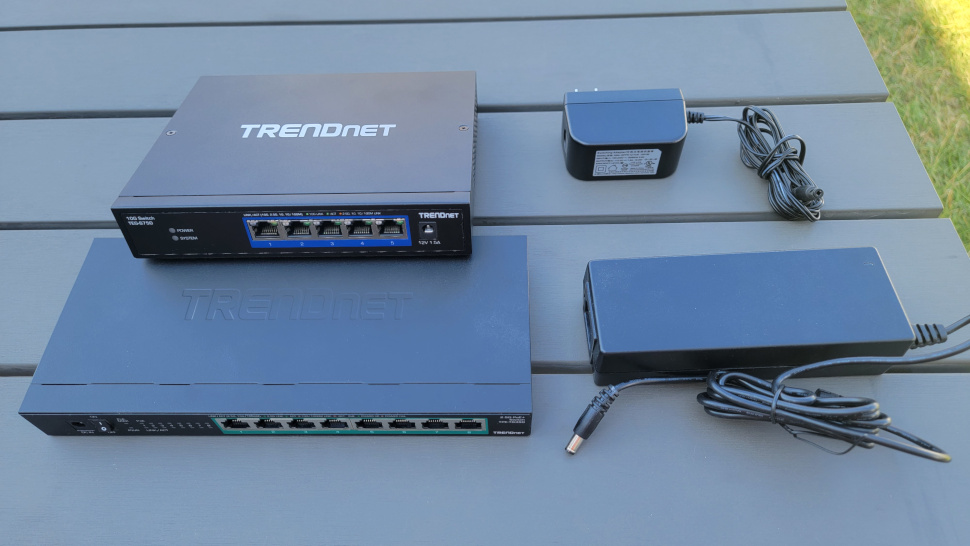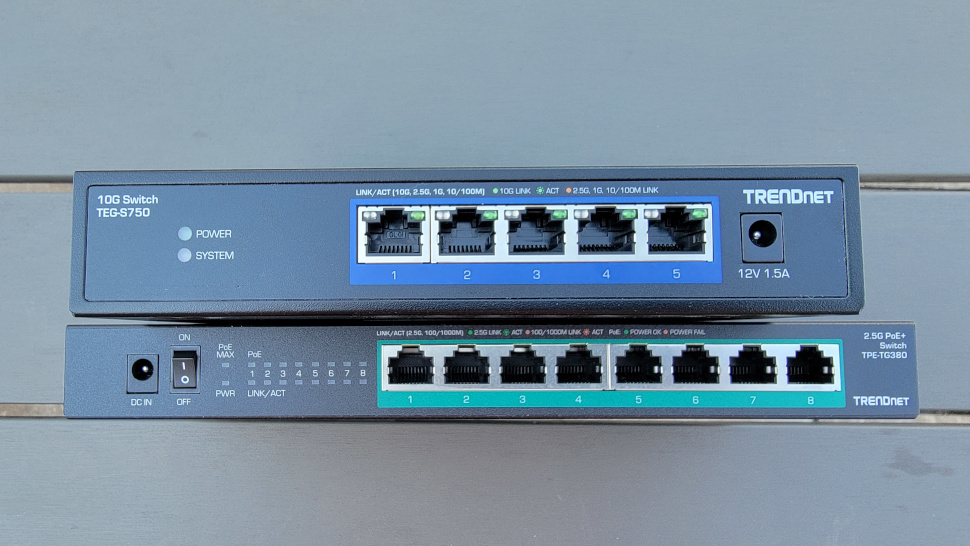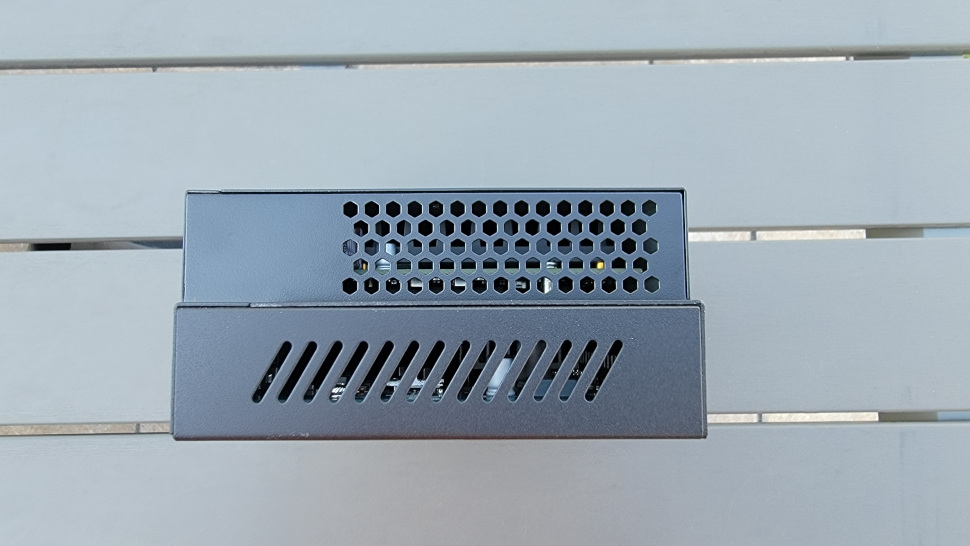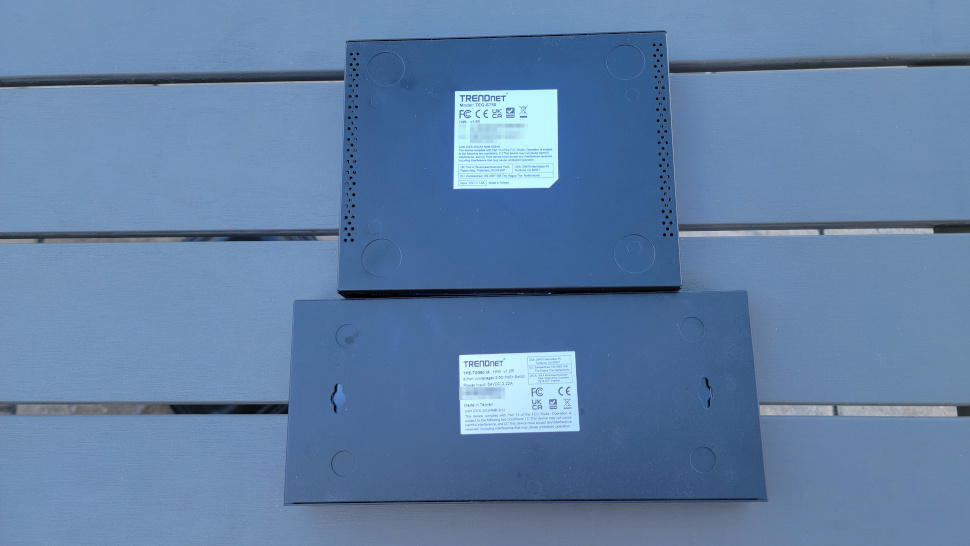TRENDnet TPE-TG380/TEG-S750
TRENDnet TPE-TG380/TEG-S750: 30 second review
TRENDnet, a global manufacturer of network devices headquartered in the US, has recently introduced two multi-gigabit unmanaged network switches, the TPE-TG380 and TEG-S750, which aim to future-proof a small home network on a budget.
The uptick in speed is at least twice for the TPE-TG380, and between five to nine times when using TEG-S750. The switches are completely silent and no moving parts mean a longer lifetime. Being unmanaged, these switches provide unprecedented ease of use since they don't require any configuration.
TRENDnet TPE-TG380/TEG-S750: Pricing and availability
The TPE-TG380 is an eight port 2.5Gbit Ethernet switch with Power over Ethernet (PoE) capability offering up to 100W. It is currently available for the special price of $266, a 5% discount on its normal price. The TEG-S750 offers faster speed at 10G but has only five ports and no PoE and is being sold for $312, again with 5% off. A six-port 10G/2.5G version is also available (TEG-S762) for $220.

TRENDnet TPE-TG380/TEG-S750: Design
The TRENDnet switch ships with a power adapter and four rubber feet as accessories. A quick installation guide and a safety notice complete the packaging. The power adapter for the 10G switch is rated at 18W 12V while the PoE-enabled switch has a 122W 55V block. The compact black anodized stainless steel case has all connections including power located on the front panel.
The TEG-S750 10G switch has five Ethernet ports with two LEDs located on top of each to indicate the link-up speed as well as network activity. Two LEDs on the left show power and system status. The power connector is located on the right side. Text located on top of the connectors describe the LEDs’ color code. This can be difficult to understand as the fonts are small.
The TPE-TG380 2.5G switch has a different layout from the 10G switch. First, it has a power on-off switch which can be handy if the DC plug is secured to a chassis for example, and cannot be removed. Two LEDs show the power status and if the PoE supply has exceeded its 30W port limit or the combined 100W power budget. A dual-LED array shows all eight ports' link-up speed, activity, and PoE status. Finally, the power socket is located on the left, next to the on-off switch.

The 10G switch has an internal bandwidth of 160Gbps which is more than the throughput of all the five 10G ports. This should prevent bottlenecks on the switch even during worst-case scenarios. An 800MHz MIPS-34Kc CPU equipped with 256MB of DDR3 RAM provides the switch’s application memory as well as a 2MB buffer. The 2.5G switch has a 40Gbps internal bandwidth twice the aggregate port capacity. No data is available for the TPE-TG380’s CPU or RAM but the performance should be similar to the 10G switch.
TRENDnet TPE-TG380/TEG-S750: Features and use
Both switches are easy to deploy. The 2.5G switch can be wall-mounted thanks to holes located on the bottom of the case. This results in a face-down position hiding the status LEDs. The 10G switch cannot be wall-mounted and can only be placed flat on a surface.
The fanless design results in air vents located on the side and bottom of the case. The 10G switch with its five Ethernet ports is more than twice as heavy as the eight ports 2.5G switch which is explained by its massive heatsink. The 2.5G sports a smaller heatsink covering only the main ICs. The higher temperature of the 10G switch also affects its Mean Time Before Failure (MTBF) which is about 43 years. The 2.5G switch on the other hand presents an MTBF of 128 years.

The 2.5G switch can reach full speed at 100m using Cat5e cabling. Likewise, the 10G switch can attain full speed at 50m using a Cat6 cable. Both switches are layer three devices and require either an ARP server for IPv4 or an NDP server for IPv6 and support speed auto-negotiation. They will settle for the lower-common speed between both link partners.
TRENDnet TPE-TG380/TEG-S750: Competition
Network switches are one of the most common pieces of equipment available in a home office. Many manufacturers offer a variety of ports and functionality such as SFPs for those wanting fiber instead of copper or management which drastically increases the usefulness of the device. That said, an unmanaged switch remains very handy because of its simplicity and lower power consumption which saves on electricity.
The TP-Link TL-SX105 could be mistaken for TRENDnet’s 10G switch. They both have five 10G Ethernet ports and sport a black metal case. But the similarities end here. The TL-SX105 is more expensive than the TEG-S750 while consuming more power and having less switching capacity at 100Gbps.

Unmanaged Ethernet switches supporting both 2.5G and PoE are rarer. The Netgear MS510TXPP is an eight-port PoE switch supporting up to 10G. It is managed and costs about twice the price of the TRENDnet switch. It is also fan-based and will hence generate more noise while also having a lower MTBF.
TRENDnet TPE-TG380/TEG-S750: Final verdict
The two switches reviewed today cover different markets. The TPE-TG380 2.5G switch with PoE can be connected to units such as 4K cameras, access points, and NAS without any drop in throughput. Its main advantage is scalability while being simple to use.
The TEG-S750 10G switch offers best-in-class throughput on a budget although with fewer ports. Both switches have passive cooling which helps keep the surroundings quiet while also extending their lifetime.
Equipped with great technology, they will get the job done while minimizing buyers’ remorse. In addition, TRENDnet provides good technical support, their products having a lifetime warranty in North America and three years elsewhere.
0 comments:
Post a Comment